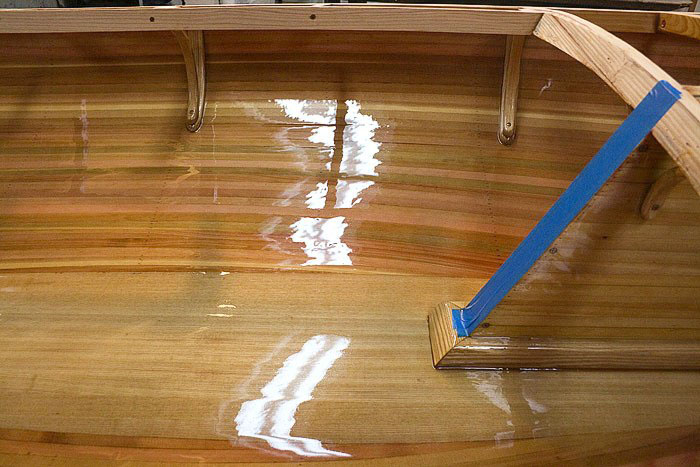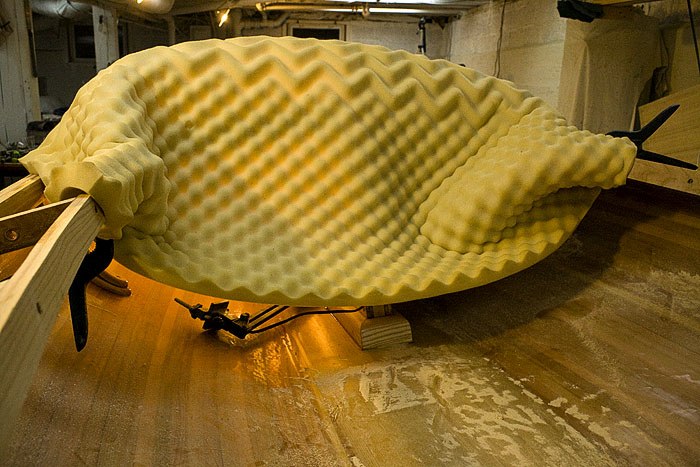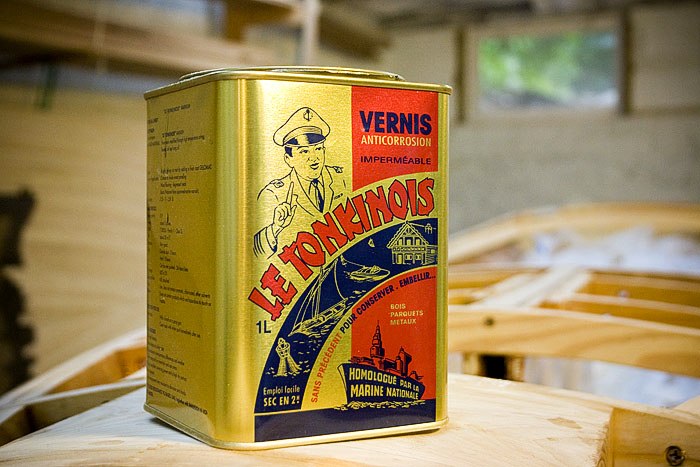Deep breath.
Early last weekend there was only one thing left to do before putting the deck on South – cutting the hatch opening.
I’ve been pondering this task for the better part of a year, going back and forth on different ways to approach it. The problem is that I really want to be able to use the cut out in the deck from the hatch opening for the hatch lid, to make a seamless unbroken sweep in the wood strips in the deck. I had already laid the opening out to line up with the curves of the cockpit, but keeping the cutout intact was going to be tricky. Not only does it have to be cut out with minimal damage, but it also has to line up perfectlly with the final hatch frame later. I settled on cutting the opening before the decks are glued down, which is easier for cutting, but requires careful planning. Continue reading “Cutting the Hatch”









